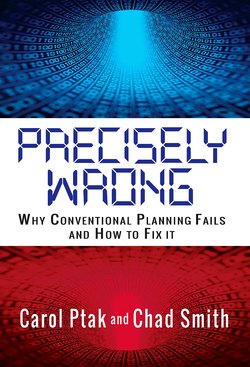Читать книгу Precisely Wrong: Why Conventional Planning Systems Fail - Carol Ptak - Страница 6
На сайте Литреса книга снята с продажи.
ОглавлениеIntroduction
“Your presentation and the one earlier blew my mind—I always felt there was something not right with MRP but I could never put my finger on it. I now understand why. THANK YOU!!!!”
The above quote is from a planner who attended two webinars we did in 2017; we were doing the webinars as part of our preparation for writing this book. This is a book more about a problem than a solution. The book on the solution has already been written. Demand Driven Material Requirements Planning1 was published in 2016. So, why write the book on the problem after the book on the solution?
Quite simply, we underestimated the strength of inertia across industry, academia, consulting, and software. To grasp the contents of a book about a solution, one must be compelled to open a book about a solution in the first place. The book jacket can only go so far. Furthermore, we have discovered that a commonsense solution does not sell itself. Often the nature of the problem must be thoroughly understood before one can relate to or grasp the totality of the solution.
This is our third book collaboration. The first was the third edition of Orlicky’s Material Requirements Planning?2 The second was Demand Driven Material Requirements Planning (noted above). This book fills a small but absolutely vital gap between those two works. People have known for quite some time that something is very wrong with conventional planning. In our two previous collaborations, we have talked about the disastrous effects of conventional planning on companies and people. We presented lists of problems and cited large amounts of data proving the existence of these effects. Yet something was missing— exactly why those effects occur. It is something that when revealed is so incredibly obvious but flies in the face of everything we held dear as the secret of success in planning.
Thus, this book became a requirement to systematically break down the inertia and usher in a new era of planning and execution across supply chains. So, we return to the problem to make a clear and definitive case for what to change and then discuss a framework in which successful change can occur.
Hang on to your seat. If you are a planner, supply chain professional, or even ERP salesperson, this book may cause you a certain level of discomfort. Our hope is, after reading this, you will also be able to say, “I always felt there was something not right with MRP, but I could never put my finger on it. I now understand why”.
However, this is not just a book about changes planning requirements. This book also introduces a completely new management model for the complex and volatile world we live in today—a management model that is not possible without first fixing conventional planning.
